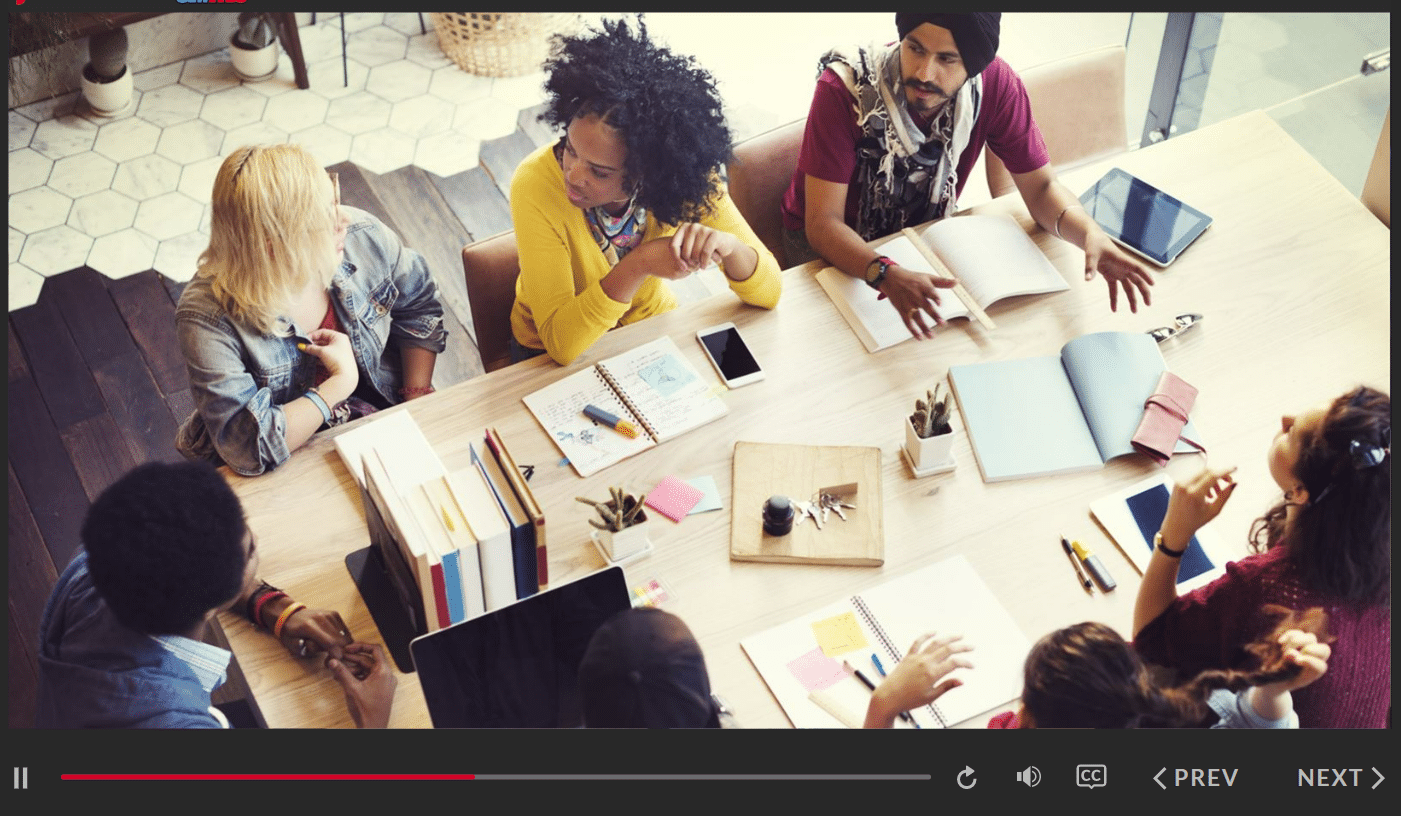
Discrimination and Harassment
Back to Blog

August 15, 2022
Supporting diversity and inclusion efforts is important in today’s increasingly diverse workplace. Employers should, and in some jurisdictions, must provide foundational anti-harassment and anti-discrimination training to employees. Employers should also provide employees unconscious bias training.
Unconscious bias happens when people make decisions that are implicitly based upon characteristics of another without even realizing or intending to do so. When unconscious bias occurs in the workplace, employers are at risk from a legal and human resources standpoint.
Effective training helps employees understand that unconscious biases exist and helps them take steps to reduce the likelihood that such biases will impact their decisions and interactions with others in the workplace.
In this article, we discuss:
What Are Unconscious Biases?
Unconscious biases are stereotypes or assumptions that a person makes about a certain group of individuals outside of their own conscious awareness. The Kirwan Institute for the Study of Race and Ethnicity explains “[t]hese biases, which encompass both favorable and unfavorable assessments, are activated involuntarily and without an individual’s awareness or intentional control.” These biases are influenced by a variety of factors, including the person’s culture, background, and personal experiences.
Implicit biases exist because a person’s “conscious brain” can only process about 40 bits of information per second, leaving the “unconscious brain” to process the rest. To do so, the “unconscious brain” continually runs in the background and quickly filters, prioritizes, and categorizes information, so that the “conscious brain” can focus on the information it deems most important. When this process is applied to the characteristics of groups of people, the brain creates stereotypes. When people apply these stereotypes to interactions and decisions about others, it can lead to discrimination. When this occurs in the workplace, employers and employees face multiple problems.
Unconscious biases about certain groups can have serious impacts on people’s lives. For example, unconscious biases can impact the job posting and hiring process. A 2020 study found that hiring managers gravitated towards candidates who were similar to them, leading men to hire men, as they tend to see them as more “competent” than women. These biases can also impact professional interactions. A 2017 healthcare industry study shows that bias amongst healthcare professionals is common and that it reduces the quality of patient care.
Unconscious biases are also harmful to organizations. The Center for Talent Innovation found that employees who perceive bias against them at work are:
Unconscious bias also has tangible effects on hiring, promotions, and feedback. For example, word choice in job descriptions may discourage women from applying because they perceive a work environment as focused on more masculine qualities. Further, once hired, there can be implicit assumptions that working mothers or pregnant women are not interested in taking on more responsibilities. Even feedback can be laced with such assumptions. For example, both male and female managers are likely to critique women more harshly for being aggressive; women’s accomplishments are also more likely to be viewed as a team effort rather than their own individual accomplishments.
Because implicit biases can negatively impact employee morale, it is vital that employers invest in combatting them in the workplace.
What Are the Goals of Providing Unconscious Bias Training to Employees?
Unconscious bias training helps make people aware that unconscious bias exists and helps them take steps to reduce the likelihood that bias will impact their decisions.
The Equality and Human Rights Commission has found that training helps raise awareness that unconscious bias exists. Training participants learn that even when they do not consciously endorse a label or stereotype, it can influence their attitudes and behavior outside their conscious awareness.
Raising awareness is critical in combatting the influence of implicit bias. When people understand that they have implicit biases, they are more likely to take steps to slow down their decision-making process. This allows their more logical brain to make decisions instead of relying on their gut instinct, which can be influenced by bias.
Thus, unconscious bias training will enable employees to work towards inclusion by becoming more aware of hidden biases and taking steps to reduce the effects of biases on others.
What are Effective Instructional Design Principles for Unconscious Bias Training?
When implementing unconscious bias training, there are a few key points employers should remember.
First, training should not “preach” to employees. Unconscious bias training should foster conversations and allow employees to confront their own biases; it should not be about blaming and shaming employees.
Second, training should not imply that people are intentionally racist, sexist, or hold other biases. These biases, by their very nature, are unconscious and unintentional.
Third, training should explain that everyone can be both a victim and a perpetrator of bias. Biases are based on more than just one’s protected characteristics. Regardless of an employees’ protected characteristics such as race, gender, disability, or age, they may also be the victim of bias based on other characteristics, such as height, weight, and appearance. It is important to train employees on the variety of different biases they could hold and how to combat them.
Training should also teach employees tangible steps they can take to make workplaces more inclusive. These actions include avoiding labels and overgeneralizations; questioning automatic assumptions; and setting ground rules for meetings so that all ideas are heard.
Training employees on these practices is the first step in helping them recognize their unconscious biases and begin to combat them.
Which Types of Bias Should Unconscious Bias Training Address?
Below is a list of some of the types of bias an effective unconscious bias training course should address.
Gender Bias
Gender bias is the preference for one gender over another, often stemming from long-standing beliefs about gender roles. Many people unconsciously assign certain gender roles or characteristics to men and women that are often not based in fact. For example, across a series of five studies, researchers consistently found evidence of the implicit stereotype that “brilliance” was associated more with men than with women.
Racial Bias
Bias based on race or color of skin is also prevalent in the workplace and has a significant negative impact on people of color. Take, for example, one study in which a fictitious legal memo with grammatical and factual errors was given to law firm partners for quality assessment. Half of the law firm partners were led to believe that the memo was written by an African American lawyer and the other half were led to believe that the memo was written by a white author. Even though the law firm partners were reviewing the same memo, they found more errors and rated the memo as lower quality when they thought that the memo was written by an African American author.
LGBTQ Bias
Members of the LGBTQ community also are the victims of unconscious bias. Nearly 1 in 10 LGBTQ employees report that they have left a job because they believed that the environment was unwelcoming.
Age Bias
Age bias in the workplace is similarly pervasive. One AARP survey found nearly 1 in 4 workers ages 45 and older have been subjected to negative comments about their age from supervisors or coworkers.
Disability Bias
Many people show an unconscious bias against individuals with disabilities. One study revealed that implicit bias against people with disabilities can increase over time and with age.
Religious Bias
People also have unconscious biases for certain religions. A study from the Association for Psychological Science suggests that people share implicit preferences for their own religious group over others.
Appearance
Effective training also addresses biases based on individual characteristics such as height, weight, and attractiveness. For example, a study published in the American Psychological Association’s Journal of Personality and Social Psychology found that managers were hesitant to hire conventionally attractive people in jobs such as housekeepers and warehouse workers because they assumed applicants would be dissatisfied with the job. On the opposite end of the spectrum, managers may feel unconsciously that candidates with poor posture, nontraditional hairstyles, or different dress sense from their own may not be a good fit for certain jobs.
Other Biases
In addition to the types of biases listed above, researchers have identified more than 150 types of unconscious bias. This shows that people can exhibit preferences or biases for any characteristic that differentiates them from other people. Other common types of biases include a bias for or against a person’s accent; marital or parental status; political beliefs; geographic background; education level; veteran status; personality type (such as extrovert vs. introvert); and communication style.
Addressing a variety of different characteristics that can unknowingly influence people’s behavior and decisions gives employees a comprehensive understanding of how unintentional biases can influence their day-to-day workplace interactions.
Interactive, Online Training on Unconscious Bias
Unconscious bias training must be part of an overall strategy for diversity, equity, and inclusion. Training helps employees recognize that such biases exist and help them take steps to reduce the impact of those biases on workplace interactions and decisions.
Traliant’s online training, Unconscious Bias: Promoting a Diverse and Inclusive Workplace, provides employees practical guidance and helps foster a diverse and inclusive workplace. Among other things, training participants learn: what unconscious bias is; why it occurs; the different types of unconscious bias; how to “interrupt” unconscious bias from impacting workplace decisions and behavior; and the impact of unconscious bias on diversity and inclusion. This is a great addition to Traliant’s online Sexual Harassment training.
Traliant also offers live, instructor-led training on unconscious bias, diversity, and inclusion, as an alternative or supplement to the online course.
Learn more about Traliant’s online training, Unconscious Bias Training: Promoting a Diverse and Inclusive Workplace.
Share
By
Elissa Rossi